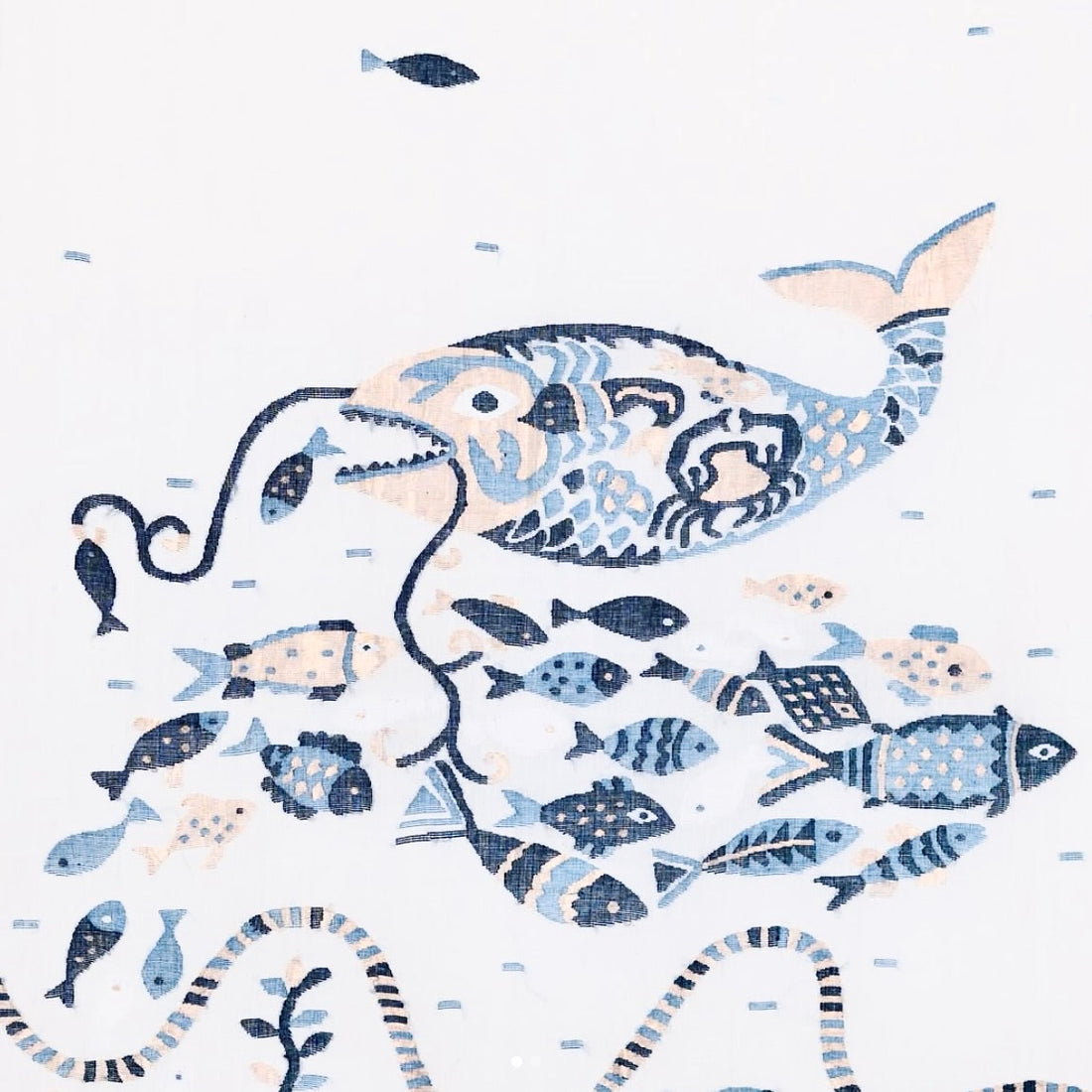
Poetry in Jamdani: The Sahaj Path
Sahaj Path is a unique limited edition six-part series of handwoven textile art, in jamdani weave, by Karomi studio, Kolkata (formerly Calcutta), West Bengal, India. It invites viewers to rediscover the magic of the first six lines of a rhyming verse from the fourth edition of Sahaj Path, a deeply cherished Bengali language learning book, written by the legendary poet Rabindranath Tagore.
“Jamdani weavers are like artists at the loom. They create beautiful canvases with warp and weft yarns, and patterns with supplementary weft yarns. Yarns of a variety of colours, each wrapped around a small bobbin, are like paint. Designs come to life as the weavers throw the shuttle that acts like a paint brush”, says textile designer Sarita Ganeriwala, as she muses on the lyrical beauty and poetic cadence of jamdani weaving.
 Jamdani weaver. Photograph by Himanshu Patra.
Jamdani weaver. Photograph by Himanshu Patra.
Jamdani is a traditional hand-weaving technique of Sarita’s home state of West Bengal in India. In this technique, the weaver creates motifs with discontinuous supplementary weft yarns that are manually interlaced into the warp...
(...)
Want to read more of this article?
We are proud to be a subscriber-funded publication with members in 185 countries. We know our readership is passionate about textiles, so we invite you to help us preserve and promote the stories, memories, and histories that fabric holds. Your support allows us to publish our magazine, and also ‘what's on’ information, and subscription interviews, reviews, and long-read articles in our online blog.
ALREADY A SUBSCRIBER? CLICK HERE TO ACCESS CONTENT
OR...to continue reading….
Magazine subscribers automatically get free access to all our online content. We send the access code by email with the publication of each issue. You will also find it on the envelope containing your magazine. Please note the access code changes every issue.
-
Image Credits:
Lead Image: Jhole Thake Maach, which means Fish Live in Water. Photograph by Niza Dafney.
Photograph of Jamdani weaver by Himanshu Patra.
